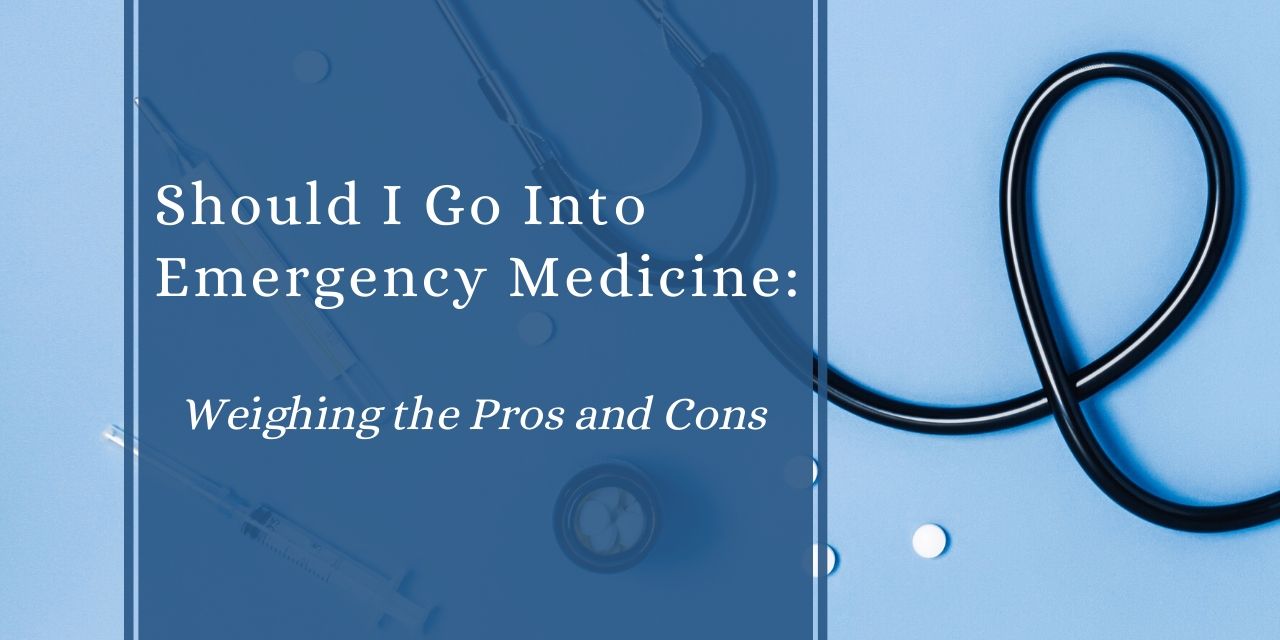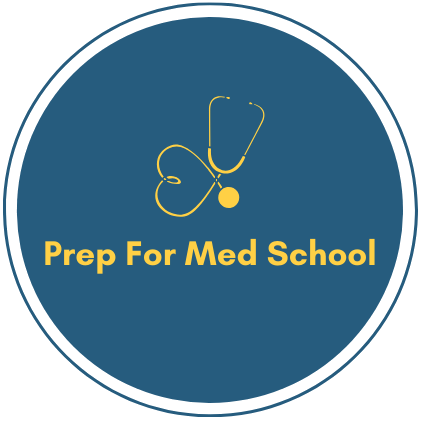Should I Go Into Emergency Medicine: Weighing the Pros and Cons

Emergency medicine is one of the sexiest specialties medicine has to offer. The fast-paced, ever-changing environment means there’s always a certain degree of catastrophe, making it an excellent backdrop for all of the drama we know and love on medical shows.
Television and reality don’t always agree, and it is no different in this case. So what’s it really like, being a real emergency medicine (EM) physician? Here are some musings below to give you a glimpse of the day in the life of an emergency physician and if the path is right for you.
Table of Contents
Not everything in emergency medicine is an emergency
Gunshot wounds, knife stabbings, car crashes…oh my! Even with experience from a Level 1 trauma center in a high-volume emergency department in the heart of New York City, high-intensity traumas don’t make up the majority of your shift.
A good portion of the chief complaints are minor – ranging from a stubbed toe to a runny nose. Much of your job description includes the ability to reassure the patient. With the way the United States healthcare system is structured, an emergency medicine physician serves as the only healthcare point of contact for certain individuals.
Oftentimes, those that have trouble navigating the healthcare system for whatever reason, or those that are uninsured, depend on the emergency room for their primary care. Providing medical education and advice on how to prevent further progression of chronic illnesses may then be added to your job description.
Patience is not your virtue
Emergency medicine physicians have a propensity for impatience. Nothing should be placed on hold – that includes orders, results, and consults. Impatience also seeps into the level of care you provide.
For example, someone that is specializing in internal medicine will follow a patient longitudinally. Internal medicine physicians follow chronic illnesses over time and connect them with other programs and specialties that can also help the patient – ensuring for holistic patient care. Patient education is a significant component of the job.
In contrast, emergency medicine focuses on acute ailments. Although patient education and connecting patients with resources are important, it occurs at a smaller level. If a patient needs continued care in the emergency department, it is punted to another specialty – and you’re off to see your next patient. As an emergency physician, the wonderful thing is that your attention span is never tested, but sometimes it’s disheartening not knowing how your patient makes it through.
The pay is what you want it to be
According to the American College of Emergency Medicine Physicians (ACEP), the average salary for a physician in emergency medicine is $221/hr for 2019-2020, equating to ~$459,000 a year for a 40-hour workweek. Another perk is the incredible flexibility once becoming a full-fledged physician.
The beauty of emergency medicine is that work is divided into shifts. You have greater control of your schedule, often having the ability to work as much or as little as you want. On shift, you are 100% percent responsible for your patients, but once clocking out, the responsibility is transferred to another physician and you are able to wash your hands clean of any obligation.
One option that is gaining popularity is per diem work. Per diem physicians are not attached to any particular hospital, thereby side-stepping any administrative responsibilities and having better control of their schedules. The downside is the need to constantly find opportunities, and when there’s a lesser need for physicians, you may be left without a job for some time. In a nutshell, there’s greater freedom and flexibility, but less financial stability.
Another option is Locum Tenens – you will carry out an assignment for a short period of time at a hospital or clinic, often located in unideal regions of the US. The compensation is handsome for all the inconveniences of working at a location away from home.
Residency
Residency is a different beast – the extensive hours can be taxing, and burn out is common. New York City is known to be the most difficult for residents, asking for an estimate of 60 hours a week from interns. The commitment decreases with every year of residency.
Emergency medicine residencies are usually 3 years, with some traditional programs being 4 years long. The pay is abysmal, which generally lies around minimum wage when considering the hours worked. You will be working under the license of another attending physician who will be supervising your work. It’s important to find a residency that allows you to see a wide variety of clinical conditions. It’s good preparation for when you will work independently under your own license.
A lot of changes have occurred in the field of emergency medicine. In the past few years, more accredited emergency residency programs have opened more positions. With no change to the amount of medical students applying to the specialty, emergency’s competitiveness has decreased. It’s generally regarded as an above-average competitive specialty, arguably more competitive than specialties such as internal and family medicine.
You’ll get some anxious patients
One of the main reasons individuals go into the medical field is to work in a career that allows you to care for others. As emergency rooms are open 24/7, you will often catch patients in the worst situations of their lives. The emergency department offers them a safe haven to talk about their concerns, and to get advice on complaints that are gnawing at them. They will come in anxious, looking for answers. One of the greatest things about the job is being there for at an individual’s darkest hour. Much of the job is to reason them through the diagnosis and help them understand how they can help themselves.
The lifestyle is killer
The phrase above is two-fold. Emergency medicine is shift work. That means you will be assigned shifts throughout each month, day and night. Holidays are fair game as well. Sometimes there’s only 24 hours to switch from a day shift to a night shift. If you have difficulty sleeping, this may not be the profession for you.
The shifts do not help with sleep as well. Shifts generally last between 8-12 hours, and during these designated hours, you’re on overdrive – balancing multiple patients, tending to emergencies as they come in, all the while maintaining a calm and collected composure. The adrenaline you derive from the high acuity nature of your work also makes it difficult to calm down after shift.
On the upside, the consolidated hours offer large chunks of free time. Attendings have noted their appreciation of the freedom to pursue other interests, to travel, and to spend time with friends or family.
We have one of the worst burnout rates
According to the Journal of the American Medical Association (JAMA), an online survey of doctors from across multiple specialties found that emergency medicine made the top 5 specialties with the most physician burnout.
Top 5 Specialties
- Urology
- Neurology
- Physical Medicine and Rehabilitation
- Internal Medicine
- Emergency Medicine
The two main factors highlighted in the article that contributed to burn-out included too many administrative duties, and extensive work hours (averaging about 51-60 hours a week).
You like a little mix of using your hands and brain
As much as emergency medicine physicians use their brain to narrow down clinical differentials, procedures are another skill emergency physicians must master.
Being adept at the following procedures is a necessity. Some of these procedures are so rare that physicians may never even come to perform them. Despite this, emergency medicine physicians are required to keep these procedures sharp in their toolbelt for when they are needed.
- Vascular access
- Suturing
- Pericardiocentesis
- Thoracotomy
- Intubation
- Ultrasound
- Lateral canthotomy
- Chest tubes
Emergency medicine is an exhilarating and ever-changing specialty. It works best for those that are able to go with the flow and approach things with a calm demeanor to control the chaos that is the emergency room. Did this provide a better glimpse of the day-to-day duties of an emergency medicine physician? Comment down below if there’s anything else you would like to know.

Leave a Reply